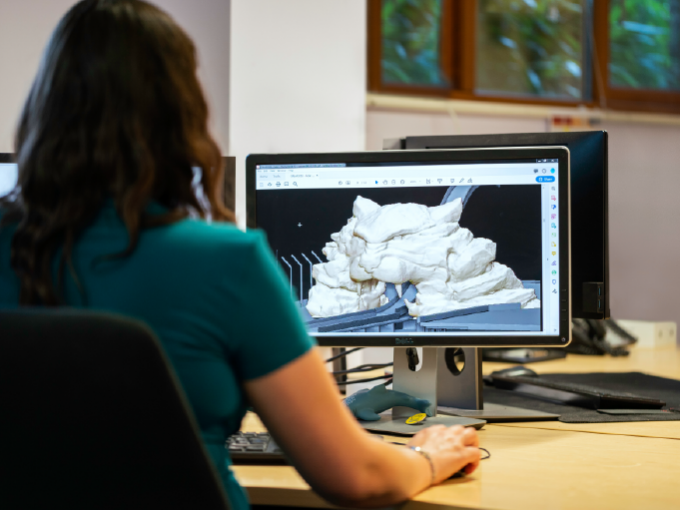3D modeling: advantages in the construction industry
Did you know that there is a technology that has revolutionized the construction industry and the design of spaces? In this post, we introduce you to 3D modeling and the possibilities it offers to this industry.

What is 3D modeling?
It is a technology that allows the creation of virtual models of objects, spaces, structures, or environments to represent them in a three-dimensional way before carrying out their realization.
Its main objective is to show, through a digital tool, the dimensions, shapes, textures, colors or any other attribute of the object or environment to be represented to visualize the concept or finishes, prior to its construction.
Why is it so important for construction?
For an SME engaged in the construction and design of interior or exterior spaces, 3D modeling is the opportunity to optimize its processes when carrying out its work.
In this way, if your business is dedicated to construction in any of its specialties, this technology helps you:
- Precise representation of a project: before starting a project, this system allows you to preview objects, dimensions, or structures in detail without having to spend any resources on their construction.
- Detect possible errors: this technology offers the possibility of identifying any inconvenience that may arise in the representation of a project and make the necessary adjustments before carrying out its construction.
- Encourage collaboration: if you use shared 3D modeling, you will have the opportunity to interact with other professionals to provide feedback and ideas in real time and make decisions based on data and information.
- Optimize your resources: the use of this technology allows you to allocate the necessary resources, such as material or labor, in an efficient manner. Thus, you will be able to anticipate the needs of the project and make a forecast of construction times, materials, and costs.
- Offer greater security: by knowing in advance the result of a construction, you can evaluate the security systems of a space and design the necessary measures to ensure the protection of the people who inhabit or enjoy it.
- Improve the client's experience: it is a very effective tool to facilitate communication with the client and share the project with him before building it, since 3D modeling allows to preview the result and to know which aspects are liked and which ones need to be changed.
How can you incorporate 3D modeling into your SME?
Using this technology in your SME can mean a significant increase in the quality of your work.
If you want to know how you can start using it in your business in the construction or space design sector, here are some tips:
- Assess your needs: check what your SME and business needs and how you can incorporate 3D modeling into your work. To do this, first, you will have to know the technological, economic or material resources you have available. Then, you will have to recognize the particular needs of the project.
- Identify the hardware you need: study the digital tools that are essential to make a 3D model. You can incorporate optional elements such as a camera or a 3D scanner, but what is essential to be able to make your virtual representation is a computer with a powerful graphics card that allows you to run projects.
- Choose the 3D modeling software: in addition to the hardware, it is essential to select the programs with which you are going to build your three-dimensional models. On the internet, you can find many free or paid options if you want to get more features.
- Perform tests: before offering a client the option of seeing their project in 3D, check internally with your team both the virtual reconstruction process and the result. This helps you to detect the areas you need to improve and to be more agile when using this technology.
- Listen to your customers: once you have everything ready and you want to use this technology in your projects, be attentive to their indications and recommendations to know their tastes. In addition to offering you the possibility of achieving greater customer satisfaction, it can help you anticipate other people's tastes in the future.
- See what you need to improve: if you have already completed your work with 3D tools, continue to move forward in the process and investigate what options you can incorporate to improve your service. For example, you can add an augmented reality application, where customers can move through a virtual space that represents the space they expect to get.
Now you know that digital transformation, in addition to helping you in terms of management, communication or process optimization, is a powerful technology that helps you to offer services that improve, first, your work and, later, customer satisfaction with your business.
If you want to continue learning more about our content on digitalization, subscribe to our newsletter!










